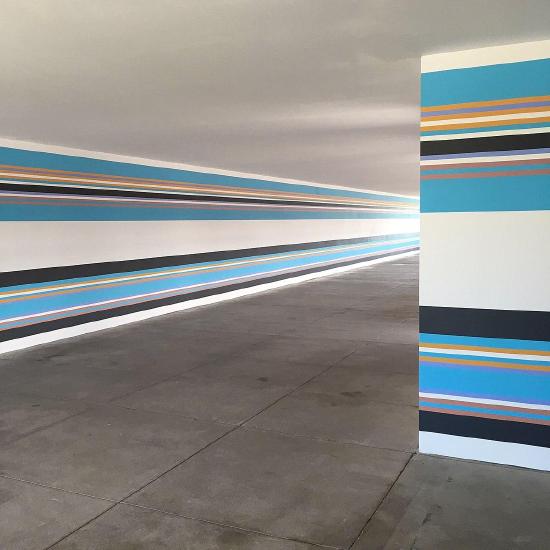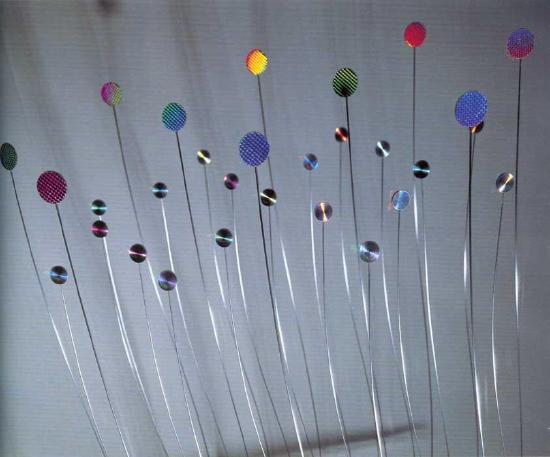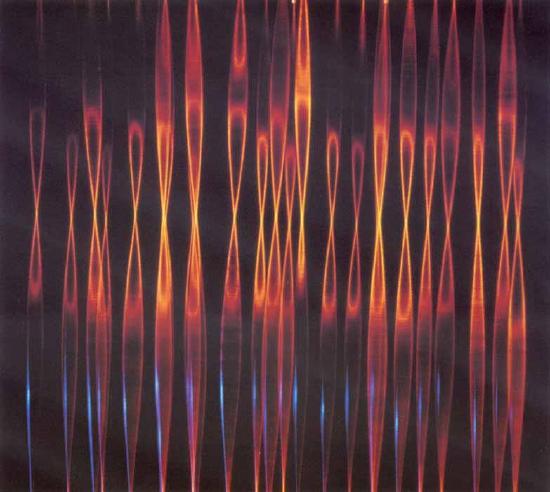14.3: Op Art
- Page ID
- 32002
|
Name |
Native Country |
|
Victor Vasarely |
Hungary |
|
Bridget Riley |
England |
|
Wen-Ying Tsai |
China |
Op Art is short for optical art, a style of visual images to create movement on a flat two-dimensional space. The abstracted art was commonly painted with black and white to create a contrast for a vibrating image. Op art is a perceptual experience and is based upon how a viewer's vision functions. A discordant figure-ground relationship will put two planes together, one from the foreground and one from the background. It creates a tense and contradictory effect with pattern and line with black and white used together.
Victor Vasarely (1906-1997) was a Hungarian-French artist and the leader of the op art movement. Leaving Budapest in 1930, and moving his family to Paris, he began to experiment with geometric forms, contrasting color, and minimal forms. Vasarely found his style in 1951 and began to develop works of art and is considered the grandfather of op art. Sign Sculpture (14.12) is from 1977 and located in Pecs, Hungary, and made from 15 different colors of tile arranged in geometric shapes. Supernovae (14.13) demonstrates his use of alternating colors and squares.


14.12 Sign Sculpture 14.13 Supernovae
Bridget Riley (born April 24, 1931) is an English painter who was influenced by the op art movement. Riley primarily worked in black and white colors to achieve high contrast in her paintings. By 1967, she began to experiment with color and repetition. Movement in Squares is a black and white painting of squares that reduce in size as they approach a point on the painting. This optical illusion gives the viewer a sense of depth, like a book that is open. It was Riley's big breakthrough into abstraction. The striped mural, Bold of Color (14.14), covers and wraps around the long walls of an English hospital.

Wen-Ying Tsai (1928-2013) was a Chinese-American cybernetic sculptor and a kinetic artist who created outstanding movable sculpture pieces. He used motors, strobe lights, metal rods, and audio instruments to create is moving art. Tsai believed movable sculpture would be more entertaining for the viewer, and Multi Kinetic Wall (14.15) is a dynamically integrated and colorful interactive wall. The gyroscopes are coordinated by motorized units that Tsai perfectly timed to sequence to achieve visual appeal for the viewer. Each unit is a work of its own, joined together as a sizeable kinetic work. His other works, Double Diffraction (14.16) and Harmonic Sculpture (14.17) were made from different stainless-steel rods, lit with strobe lights, and the rods vibrate and make noise from the sensuous movements.





